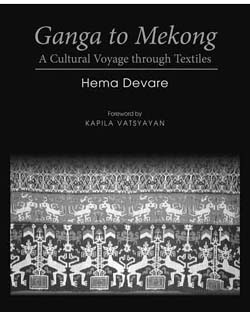As stated by Kapila Vatsyayan, Chairperson, IIC Asia Project in her Foreword, the book is the author’s ‘personal voyage or certainly a journey of exploring and identifying the many levels of communications between India and countries of South East Asia over a long period of history.’ The journey has been lucidly captured in the text that illustrates the large number of colour visuals in the book. Many of these have been sourced from museums in countries of South East Asia during the author’s long sojourns in the region.
The book highlights the cultural role of textiles in society as indicators of status, wealth and gender or ethnic identity. Textiles were closely linked with rituals and rites of passage. For example, in South East Asia, patola became known as cindai, a protective cloth, which was used as an important item of royal dowry and was also preserved in village shrines. The emphasis in much of secondary writing on the subject has either been on trade or on anthropological work in communities involved in the production of textiles. By focusing on the textiles themselves, the book under review breaks new ground and provides a hitherto under-researched perspective.

